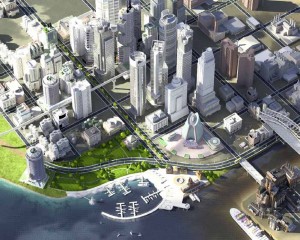This post originally appeared on the Carbon Talks blog.
American inventor Charles F. Kettering, head of research at General Motors for 27 years, gave us such thanks-but-no-thanks inventions as leaded gasoline, Freon, and aerial missiles. But along with these gifts to our health and security, he threw in a few choice quotes, including “people are very open-minded about new things – as long as they’re exactly like the old ones”, and “my interest lies in the future because I am going to spend the rest of my life there.” Despite whatever reservations I may have over Kettering’s contributions to progress and the future, his attitude resonates. No matter how open-minded we consider ourselves, we are often closed to those ideas that disagree with what we consider to be inescapable, with what we consider to be “just the way it is.”
This presents a great danger for the modern economy, when innovators and radical thinkers are dismissed. Projects that may very well benefit us all are shelved because they represent risk, and risk-aversion goes against short-term growth and unbounded economic prosperity, that swan song of the 20th century.
This holds particularly true when it affects our homes and communities. When the places in which we live are under threat of transformation and metamorphosis, may of us arch our backs and bristle with skepticism. For some cities, the issue may be bike lanes; for others, perhaps it’s smart meter technology; some communities get upset about wind turbines. Whatever the issue is, there are inevitably going to be people who cannot handle that their city is changing, and their idea of home is under siege.
As with many others of my generation, I grew up designing cities. Being a middle-class nerdy kid growing up in a quiet corner of Ottawa, along with heavy metal and soda, my main source of entertainment when I was twelve years old was video games. Out of all the games that my friends and I would play, often until dawn broke and the sugar crash landed, there was nothing more addictive, challenging, and fascinating than SimCity.

SimCity is more of a toy than a game. You act as the all-powerful mayor of a city, and with the tools that the game hands you (different zoning, transportation options, taxation, power, and services) attempt to build the city of your dreams. Like reality, there’s no measurable way to win. If you want to build wind turbines, vast parks, city farms and a communist agrarian utopia, go for it. If you’d rather sack all the police, burn down the fire stations, and let crime and poverty run rampant, there’s nothing stopping you.
I wasn’t nearly so creative, and my own cities reflected my teenaged understanding of economics. I found that if I set low taxes on high-tech clean business, and compensated with high taxes on dirty industry, then it would encourage growth in the sectors that were attractive to me. But because the game required a diversity of economic drivers, I was forced to build some heavy industry, and put low-income housing next door. Without even thinking about it much, I would soon have a segregated city with high crime, heavy industry, and poor infrastructure near the power plant, and high-density apartments, office towers, and parks and plazas on the waterfront.

What I didn’t understand then is that the game had rules built in that were relatively inflexible. While real urban planners have to deal with their own structure of criteria, legislation, policies, and regulations, there is also room for creativity and innovation. Yet because of the risk-averse nature of financial institutions, government, and corporations, we are often stuck within a rigid set of rules just like the mayor of a SimCity.
The newest version of SimCity due out in 2013 will evolve to reflect a new reality of urban planning. Resources are now limited, neighbouring cities and their behaviour affects how your city grows, policies can encourage energy efficiency, and power plants are appropriately beneficial and harmful as you would expect. These are all welcome improvements, and maybe it will encourage children (of all ages) to think more critically about how our cities can evolve. But no matter what improvements are made by game designers, barring massive advancements in gaming and computer science, the player remains locked in a fixed set of rules.
Back in reality, we need not be so inflexible; the Platonic form of a city that we share is up for discussion. As more and more people move to cities over the coming decades, our cities must grow and evolve in response. Only the most open-minded community leaders will see the potential for positive change. The rest of us will be stuck with pre-fabricated cities built on a rigid set of rules that belong to an earlier time. That’s fine for a game, but in our own homes and communities, surely we can do better.
(Feature photo courtesy of Wikimedia Commons)

